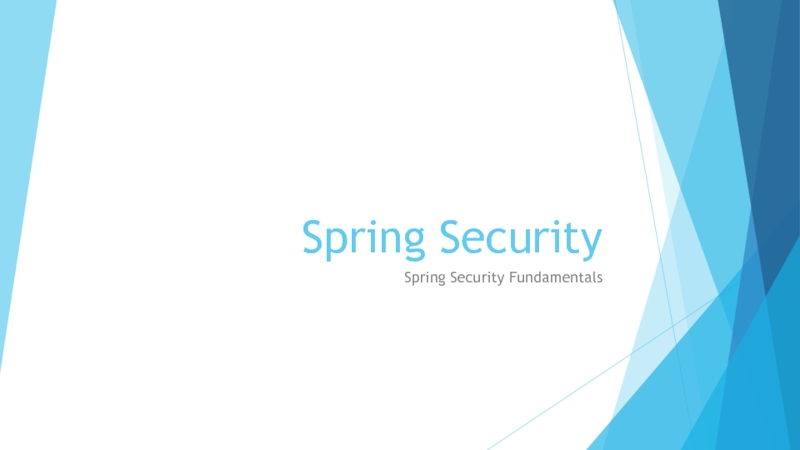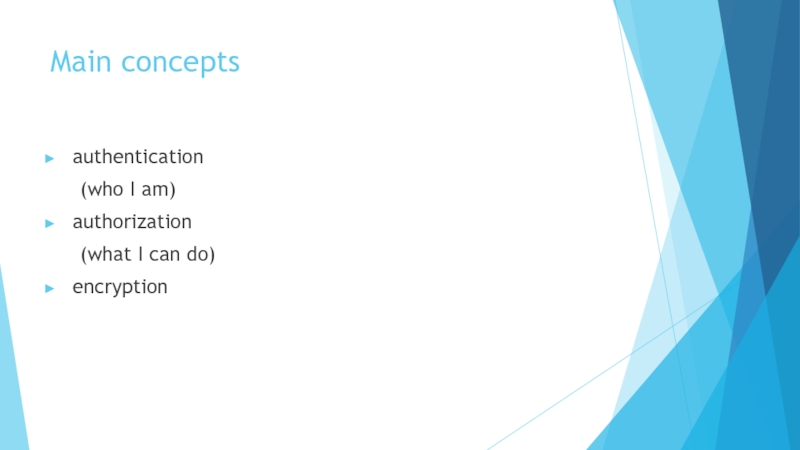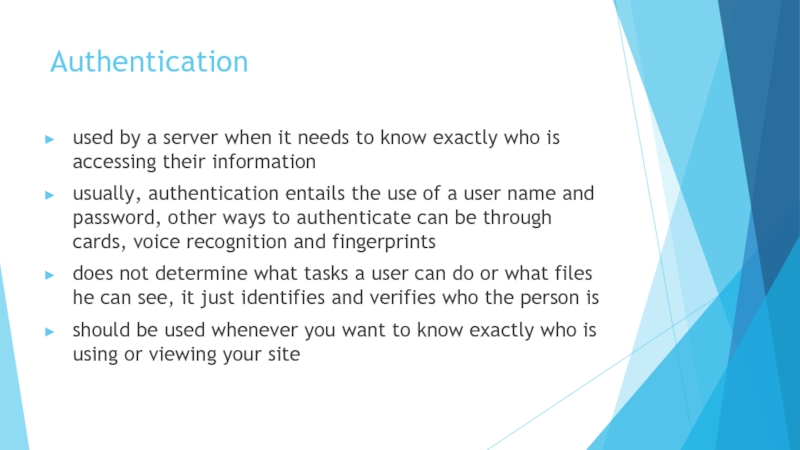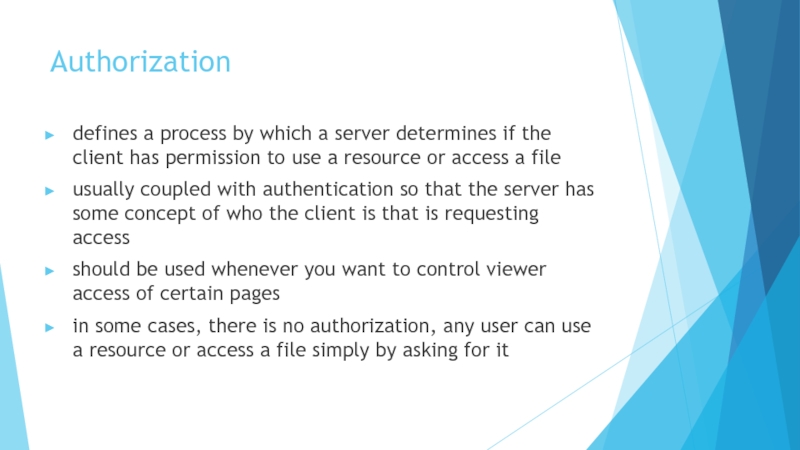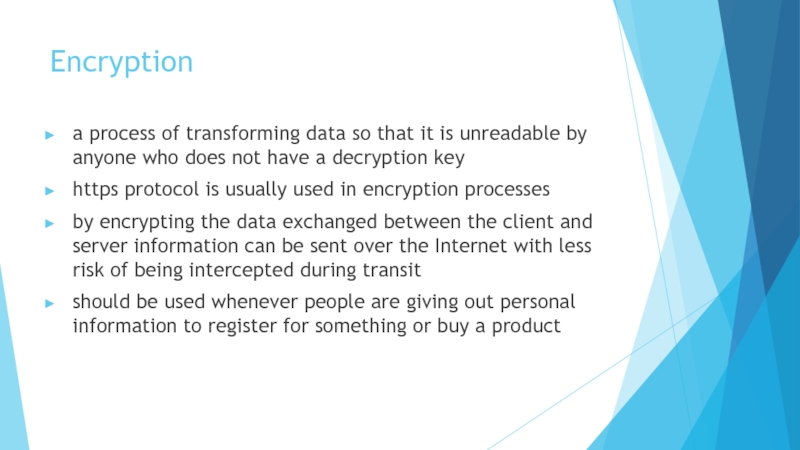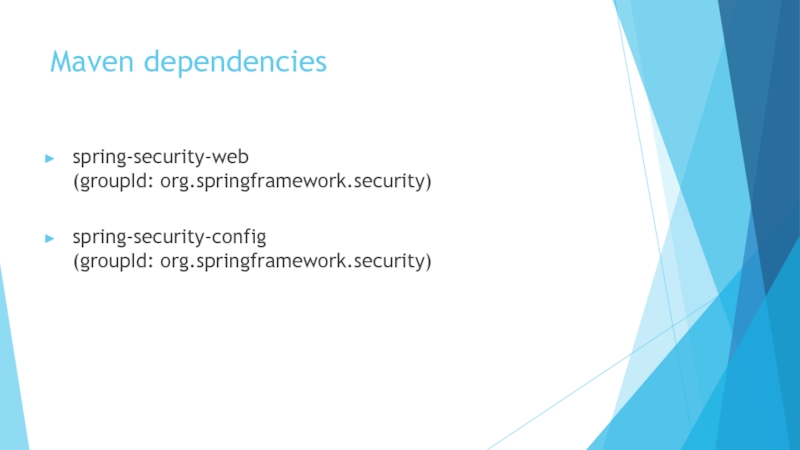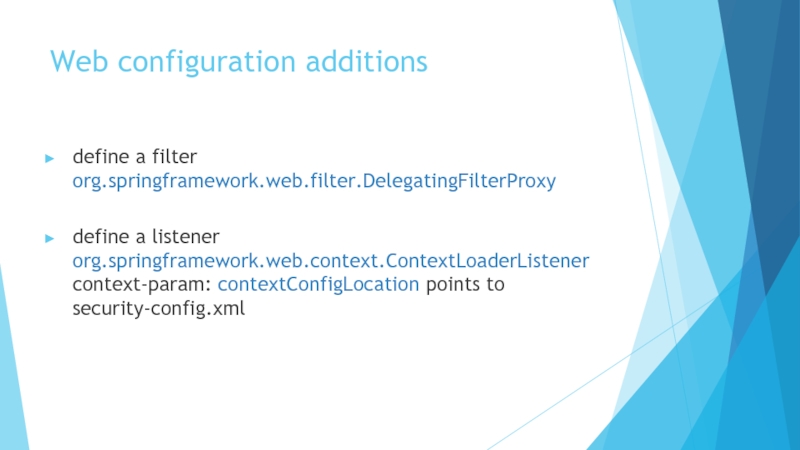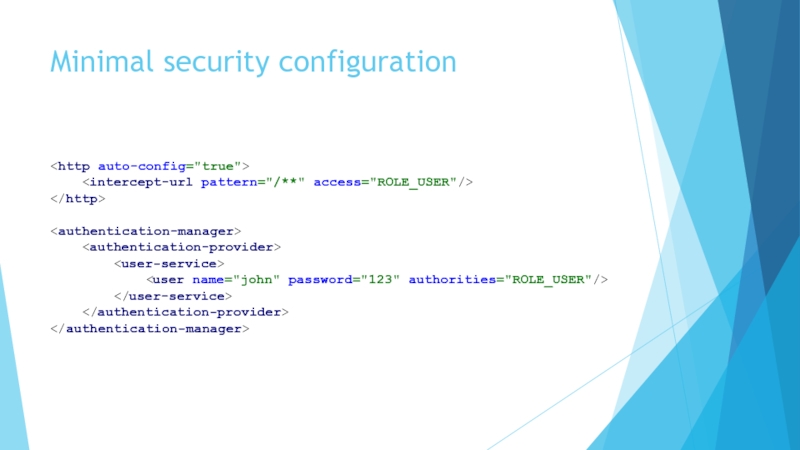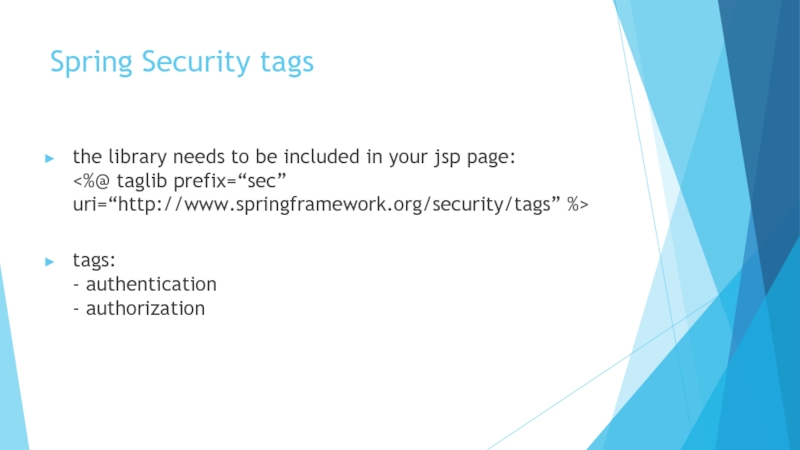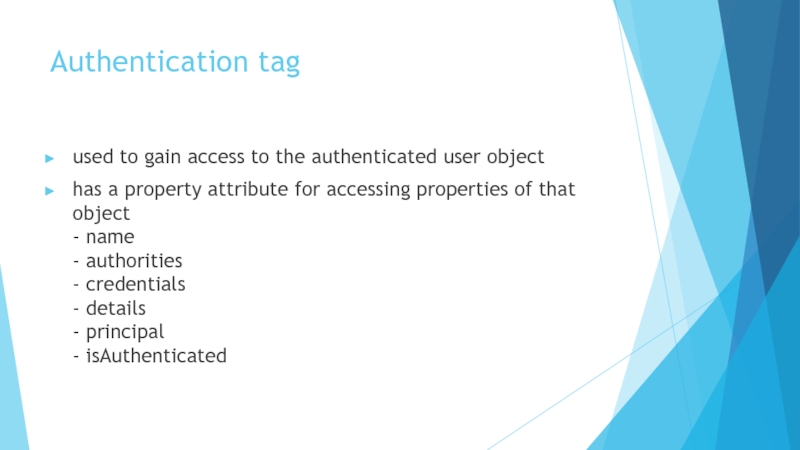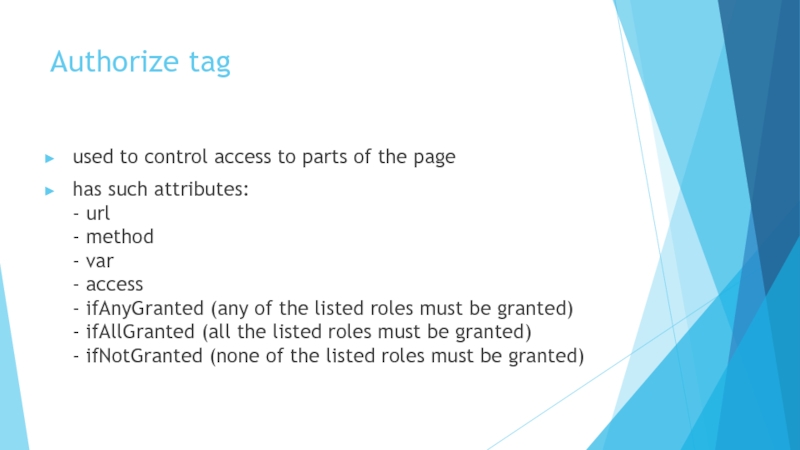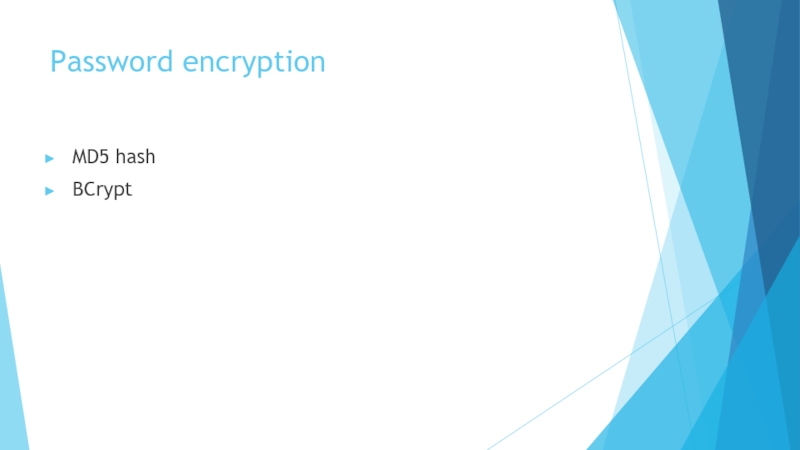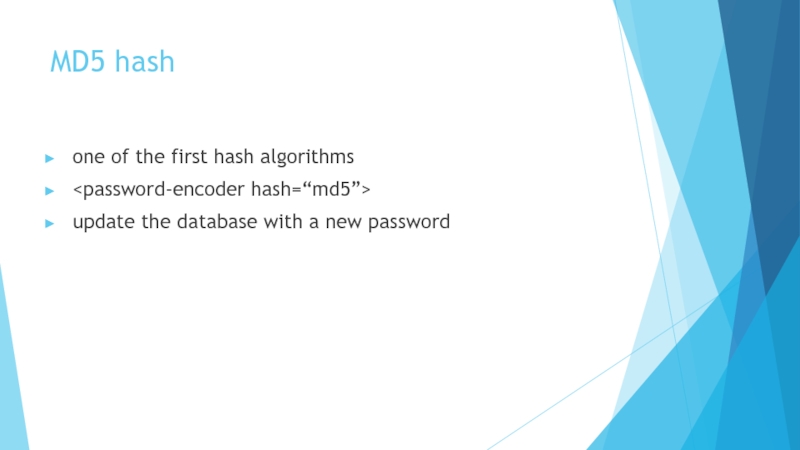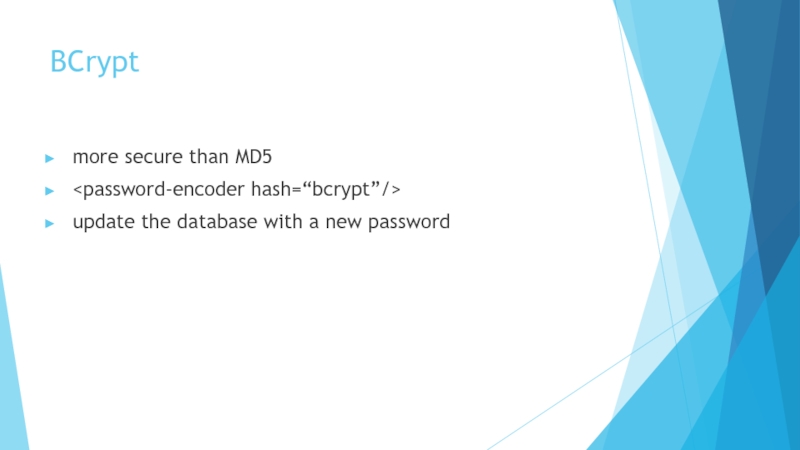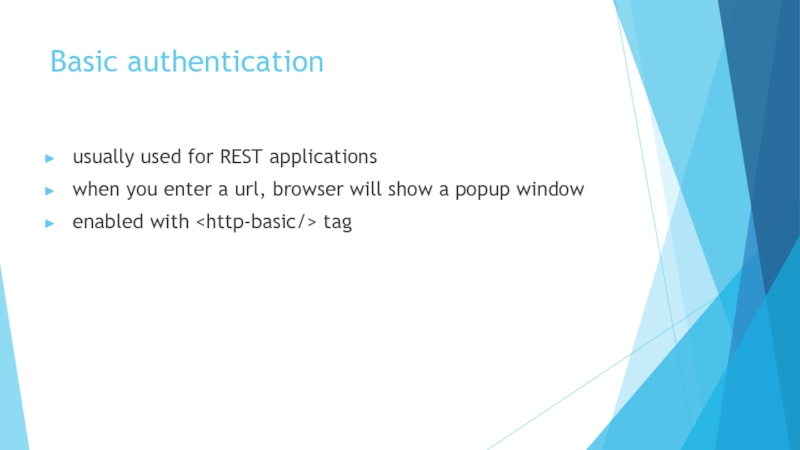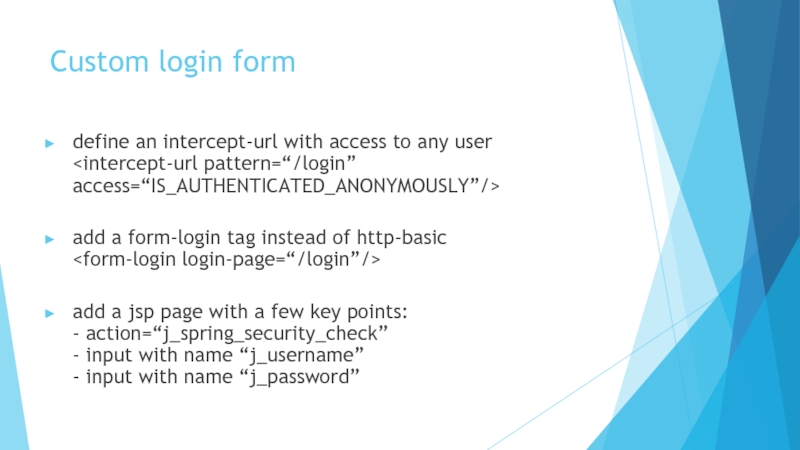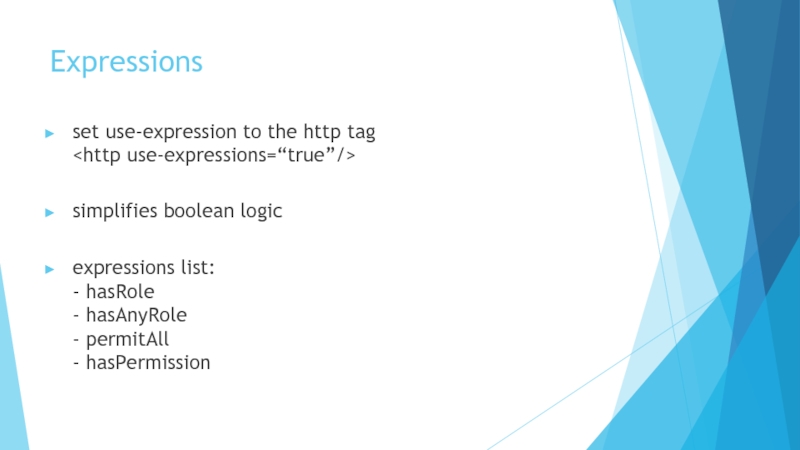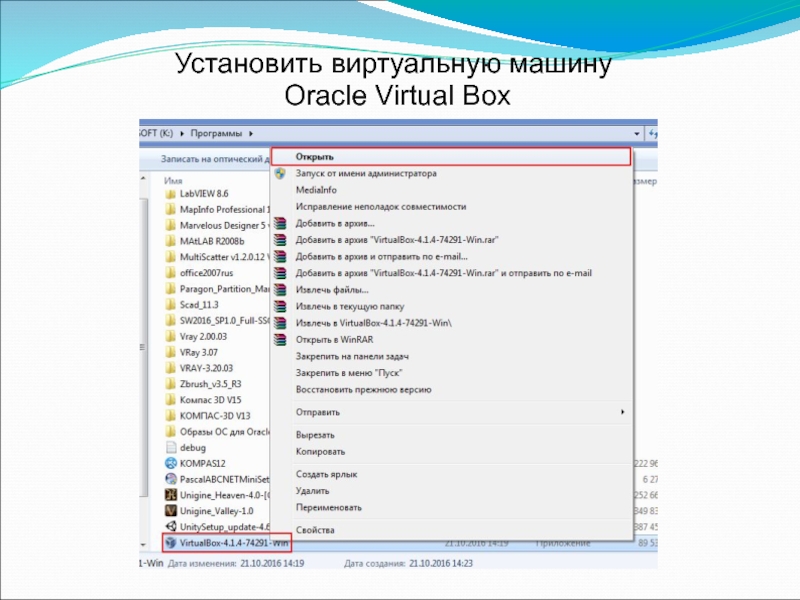- Главная
- Разное
- Дизайн
- Бизнес и предпринимательство
- Аналитика
- Образование
- Развлечения
- Красота и здоровье
- Финансы
- Государство
- Путешествия
- Спорт
- Недвижимость
- Армия
- Графика
- Культурология
- Еда и кулинария
- Лингвистика
- Английский язык
- Астрономия
- Алгебра
- Биология
- География
- Детские презентации
- Информатика
- История
- Литература
- Маркетинг
- Математика
- Медицина
- Менеджмент
- Музыка
- МХК
- Немецкий язык
- ОБЖ
- Обществознание
- Окружающий мир
- Педагогика
- Русский язык
- Технология
- Физика
- Философия
- Химия
- Шаблоны, картинки для презентаций
- Экология
- Экономика
- Юриспруденция
Spring security fundamentals презентация
Содержание
- 1. Spring security fundamentals
- 2. Main concepts authentication (who I am) authorization (what I can do) encryption
- 3. Authentication used by a server when it
- 4. Authorization defines a process by which a
- 5. Encryption a process of transforming data so
- 6. Maven dependencies spring-security-web (groupId: org.springframework.security) spring-security-config (groupId: org.springframework.security)
- 7. Web configuration additions define a filter org.springframework.web.filter.DelegatingFilterProxy
- 8. Minimal security configuration
- 9. Database configuration create two tables users (fields:
- 10. Spring Security tags the library needs to
- 11. Authentication tag used to gain access to
- 12. Authorize tag used to control access to
- 13. Password encryption MD5 hash BCrypt
- 14. MD5 hash one of the first hash
- 15. BCrypt more secure than MD5 update the database with a new password
- 16. Basic authentication usually used for REST applications
- 17. Custom login form define an intercept-url with
- 18. Expressions set use-expression to the http tag
Слайд 3Authentication
used by a server when it needs to know exactly who
is accessing their information
usually, authentication entails the use of a user name and password, other ways to authenticate can be through cards, voice recognition and fingerprints
does not determine what tasks a user can do or what files he can see, it just identifies and verifies who the person is
should be used whenever you want to know exactly who is using or viewing your site
usually, authentication entails the use of a user name and password, other ways to authenticate can be through cards, voice recognition and fingerprints
does not determine what tasks a user can do or what files he can see, it just identifies and verifies who the person is
should be used whenever you want to know exactly who is using or viewing your site
Слайд 4Authorization
defines a process by which a server determines if the client
has permission to use a resource or access a file
usually coupled with authentication so that the server has some concept of who the client is that is requesting access
should be used whenever you want to control viewer access of certain pages
in some cases, there is no authorization, any user can use a resource or access a file simply by asking for it
usually coupled with authentication so that the server has some concept of who the client is that is requesting access
should be used whenever you want to control viewer access of certain pages
in some cases, there is no authorization, any user can use a resource or access a file simply by asking for it
Слайд 5Encryption
a process of transforming data so that it is unreadable by
anyone who does not have a decryption key
https protocol is usually used in encryption processes
by encrypting the data exchanged between the client and server information can be sent over the Internet with less risk of being intercepted during transit
should be used whenever people are giving out personal information to register for something or buy a product
https protocol is usually used in encryption processes
by encrypting the data exchanged between the client and server information can be sent over the Internet with less risk of being intercepted during transit
should be used whenever people are giving out personal information to register for something or buy a product
Слайд 6Maven dependencies
spring-security-web
(groupId: org.springframework.security)
spring-security-config
(groupId: org.springframework.security)
Слайд 7Web configuration additions
define a filter
org.springframework.web.filter.DelegatingFilterProxy
define a listener
org.springframework.web.context.ContextLoaderListener
context-param: contextConfigLocation points to security-config.xml
Слайд 9Database configuration
create two tables
users (fields: username, password, enabled)
authorities (fields: username, authority)
create
a user and his rights
insert some data into the tables
change “user-service” to “jdbc-user-service” in the security-config.xml
change “user-service” to “jdbc-user-service” in the security-config.xml
Слайд 10Spring Security tags
the library needs to be included in your jsp
page:
<%@ taglib prefix=“sec” uri=“http://www.springframework.org/security/tags” %>
tags: - authentication - authorization
tags: - authentication - authorization
Слайд 11Authentication tag
used to gain access to the authenticated user object
has a
property attribute for accessing properties of that object
- name
- authorities
- credentials
- details
- principal
- isAuthenticated
Слайд 12Authorize tag
used to control access to parts of the page
has such
attributes:
- url
- method
- var
- access
- ifAnyGranted (any of the listed roles must be granted)
- ifAllGranted (all the listed roles must be granted)
- ifNotGranted (none of the listed roles must be granted)
Слайд 16Basic authentication
usually used for REST applications
when you enter a url, browser
will show a popup window
enabled with
enabled with
Слайд 17Custom login form
define an intercept-url with access to any user
access=“IS_AUTHENTICATED_ANONYMOUSLY”/>
add a form-login tag instead of http-basic
add a jsp page with a few key points: - action=“j_spring_security_check” - input with name “j_username” - input with name “j_password”
add a form-login tag instead of http-basic
add a jsp page with a few key points: - action=“j_spring_security_check” - input with name “j_username” - input with name “j_password”
Слайд 18Expressions
set use-expression to the http tag
simplifies boolean logic
expressions list:
- hasRole
-
hasAnyRole
- permitAll
- hasPermission
